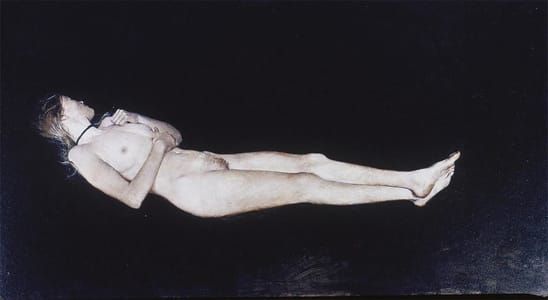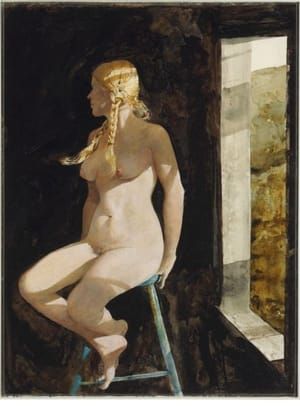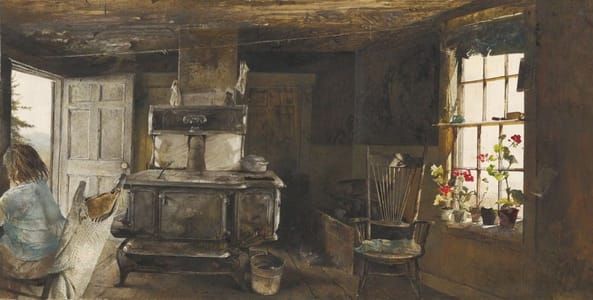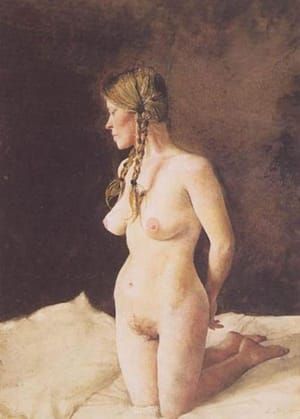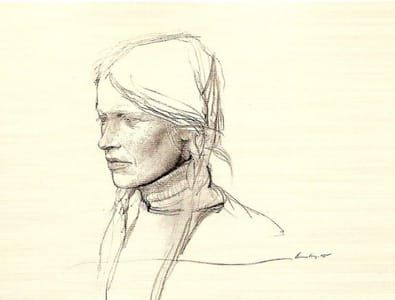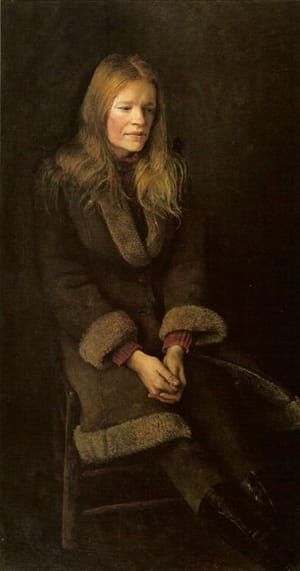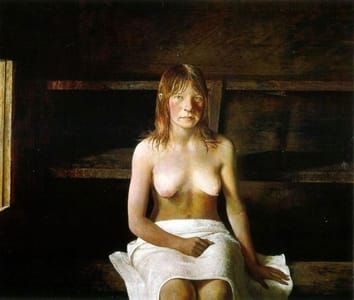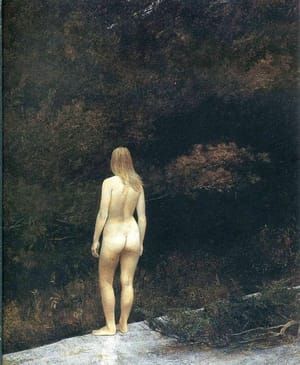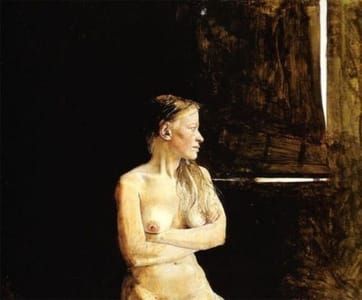
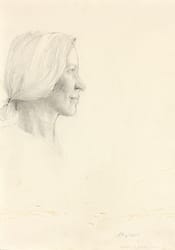
The First Drawing (detail), 1971
Andrew Wyeth
Helga Testorf, a neighbor of the Kuerners, meets the artist. He begins drawing her in a secret project that will last into the 1980s.
(http://andrewwyeth.com/timeline/)
Andrew Wyeth once described Helga Testorf as an image he couldn’t get out of his mind. The 89-year-old artist is still often driven by what he calls the “white heat of inspiration.” But in those early years of getting to know his then 31-year-old German neighbor—the future subject of what would come to be called the Helga pictures—he sensed that the creative process would evolve over time.
Wyeth was 53 and at work on the painting Evening at Kuerner’s when he first encountered Helga, who was caring for Karl Kuerner. The artist, who is part German, part Swiss, was intrigued by Helga’s Germanic character and outlook. He realized that Helga had sustaining power. She was also a figure of his imagination; the source of his “fifteen-year reverie,” as Wyeth’s biographer later called her. From 1971 to 1985, Helga was Wyeth’s secret muse. He created nearly 240 images of her, showing them to no one and storing them in an unheated attic room at Kuerner’s house.
...The entire Helga suite tends to be remembered for its highly detailed nudes, particularly the image of Helga wearing a black ribbon around her neck, which is often compared to Manet’s Olympia. The Adelson exhibit offers a broad view of the suite and includes First Drawing, a 1971 head portrait of Helga, so named because Wyeth considered it to be his first successful treatment of his subject. It also features the last work in the Helga series, Refuge, a 1985 drybrush painting that shows Helga at a time when she was undergoing treatment for depression. Wyeth called it a view of “a woman pulling away from life.” Each of Wyeth’s Helga images stands alone as emotionally powerful works of art.
Wyeth, who is often described as an artistic loner and difficult to categorize, may be best known for his exacting egg tempera technique. At least, his most famous works and those that have commanded the highest prices have been in that medium. In May of 2005, for instance, Sotheby’s sold a 1987 tempera, Battle Ensign, for $3.8 million, more than double its estimate of $1.5 million.
Still, it is the secrecy of the Helga images and Wyeth’s prolonged study of his model—there were 35 drawings and watercolors alone investigating the poses of Helga asleep—has remained in the public’s imagination. In a 1993 interview I had with Wyeth prior to the first showing of the Helga paintings in his native Chadds Ford, Pennsylvania, Wyeth remarked: “I just put them away. Sometimes, I just let them fall to the floor, and I would walk all over them, or I let my dog trample over them. One time, I even ripped a picture in half. The [Brandywine River] museum put that one together again.”
Fortunately, there was nothing to repair for Andrew Wyeth: Helga on Paper. It features something from nearly all the major groupings in the Helga pictures—the sleep portraits, the nudes, the figures in the landscape. There is also a number of recto-versos and seemingly incomplete works; partial drawings and watercolors that cover only a small part of the paper surface, a typical Wyeth approach. These might be mistaken for preliminary studies if their closely observed details—the shape of Helga’s elbows, for instance—did not transform them into interesting, even eccentric pictures. Adelson’s interest in featuring the seemingly “false starts” and unfinished works is rare among gallery owners. “To me, it’s exciting to show works that are unexpected and inconclusive. And how often do you get to see an artist working out specific problems in his head?”
(https://www.incollect.com/articles/andrew-wyeth-helga-on-paper)
Uploaded on Jul 18, 2017 by Suzan Hamer
Andrew Wyeth
artistArthur
Wait what?
